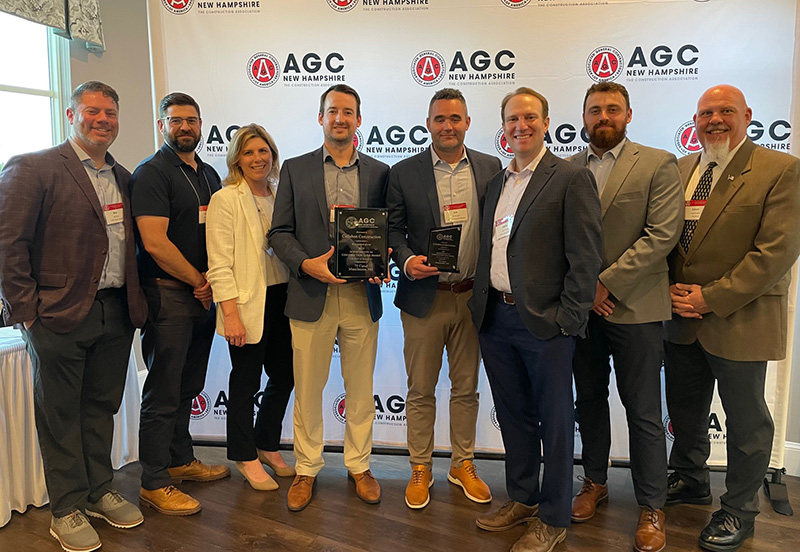News: Construction Design & Engineering
Posted: February 14, 2008
Scott Payette Architects completes design for MBTA substation rehab into community access cable news station
Scott Payette Architects has completed the Egleston Square substation rehabilitation, the new headquarters for Boston Neighborhood Network, Boston's community access, education and cable news station. Located at an inner-city corridor in the geographic center of Boston, the television and media center appears poised to become a promising cultural and architectural "anchor" for Roxbury's Egleston Square neighborhood.
The 12,000 s/f building preserves a strong sense of the original, and the interior has been handsomely reconfigured and refit into new working spaces with many new elements that present a luminous counterpoint to the existing historic structure.
The $4 million project began two years ago, when BNN-TV and Urban Edge, a local non-profit developer, purchased an abandoned MBTA substation. The rundown building had been idle since 1986, a relic from the old elevated Orange line that served the Washington St. corridor for much of the 20th century. The structure presented an opportunity to recreate a community access and educational television studio for BNN and a revitalizing cultural center for this struggling community.
The clients asked Scott Payette Architects to produce a high-tech television environment, while preserving the historic exterior and crafting a LEED certified building.
The design approach retained much of the historic building fabric. The exterior brick and stucco, wrought iron fences and copper windows were restored according to National Park Service guidelines. The original exposed steel interior structure, wooden roof deck and monumental copper windows were kept. New elements and materials were added to complement the existing industrial architecture. Glass walls, light wells and double and triple height spaces were incorporated to preserve the volumetric character of the old turbine room. These oversize vertical spaces, with their many translucent to transparent elements and features also help bring natural light to the interior rooms, and generate an open and interactive studio environment. Energy and resource efficient systems, fixtures and building materials were used in combination with geothermal wells to reduce the building's carbon footprint and lower long-term operating costs.
The original building, a substation power plant, was an un-insulated triple height brick and steel structure with large windows at either end, but few on the sides. An additional floor was added, creating a double height space for the second floor TV studios. Light wells were created at the ends of the building to admit more natural light, and to accommodate an existing crane that had once been used to replace spent turbines. (The National Park Service required the antique equipment be preserved for the interest of posterity.)
On the second floor, the original metal roof trusses and wood deck were left exposed. The new mechanical systems, piping and lighting were also exposed, again reinforcing the industrial esthetic. As a counterpoint, new drywall, partitions, glass partitions, wooden door, carpeting and other finishes were added to produce a more comfortable and functional workplace.
On the first floor, the media lab and conference room, both major public areas, were designed with floor-to-ceiling glass partitions to allow natural light to radiate throughout the building, and to facilitate visual interaction between staff and visitors. Security and facility operations were given special attention.
Two geothermal wells were drilled to reduce reliance on fossil fuels and to eliminate the necessity for rooftop or site-mounted mechanical equipment. Energy and resource efficient systems, fixtures and building materials were used to reduce the building's carbon footprint and lower long term operating costs.
The project has received historic tax credits from the National Park Service and is applying for LEED-certified status.
MORE FROM Construction Design & Engineering
Nobis Group awards Robinson and Moreira STEM scholarships
Concord, NH Nobis Group, a 100% employee-owned consulting firm specializing in engineering and environmental solutions across the Northeast, has named the recipients of its 2025 STEM Scholarship: Andie Moreira of

Columns and Thought Leadership

Ask the Electrician: Is summer a prime time for commercial electrical maintenance?
The answer is “Yes!” While January marks the official new year, many businesses view September as a fresh start. This makes summer an ideal time for commercial property owners to schedule long-term electrical maintenance projects.

The rise of incubators and co-working spaces: The latest in life sciences - by Matt Combs
In recent years, the life science industry has witnessed a shift in how companies operate and innovate. One of the key driving forces behind this transformation is the emergence of incubators and co-working spaces specifically tailored to meet the unique budget and schedule needs of startups.

The design-build advantage: Integrated interior design solutions - by Parker Snyder
When it comes to corporate interior spaces for both commercial and industrial projects, partnering with a design-build firm with in-house interior design services can offer clients many benefits. Unlike traditional delivery methods where interior designers operate independently from the design and construction teams, often creating a longer project timeline as cost negotiations and revisions ensue

Careers in Construction Month focus on training and safety - by Joe Camilo
October is Careers in Construction Month, and rarely has it been more consequential. According to our chapter’s national parent organization, the construction industry needs to attract half-a-million new workers in the coming year to meet demand. Addressing that need is a huge job, but we at ABC MA are trying to do our part.







